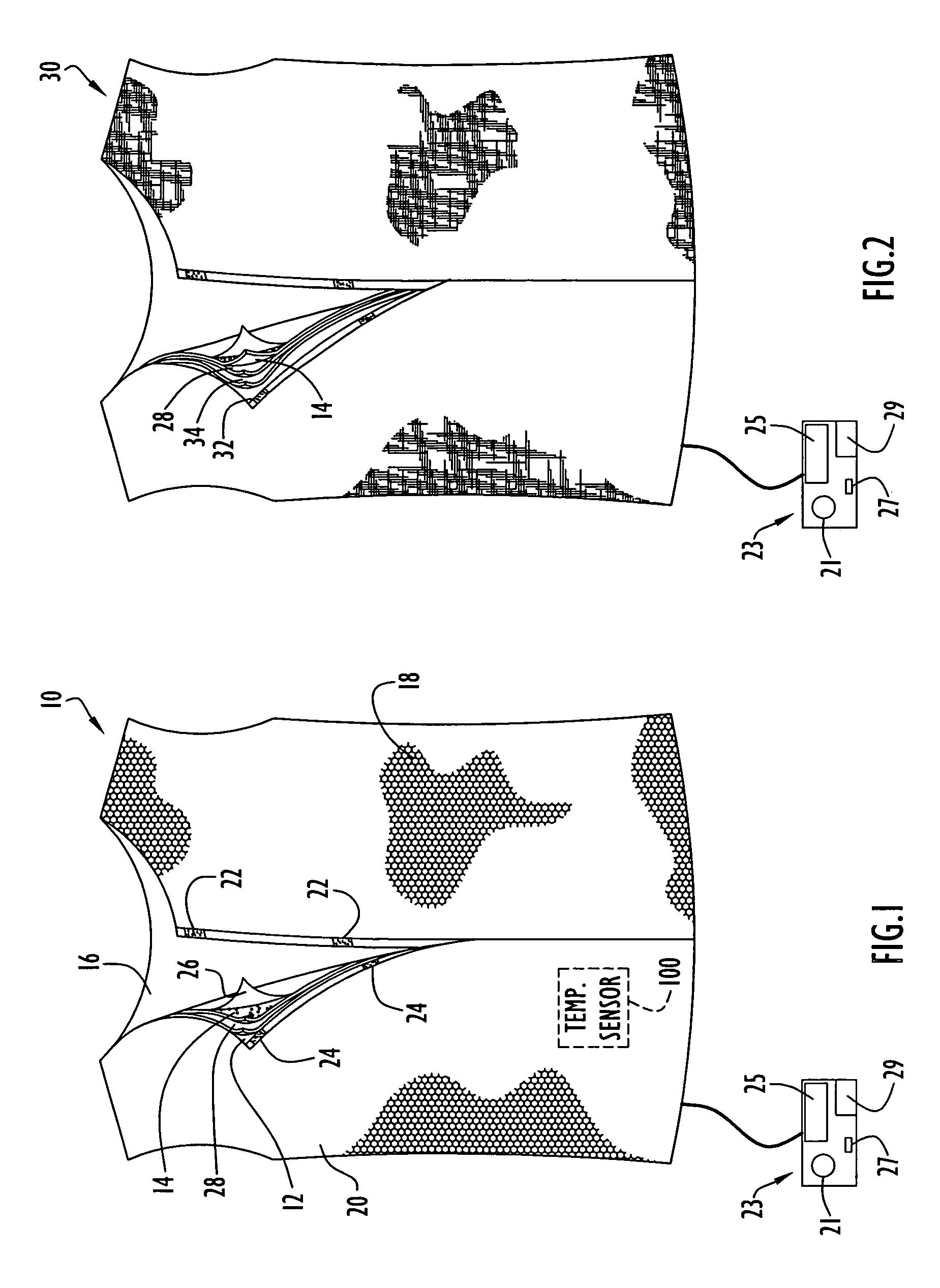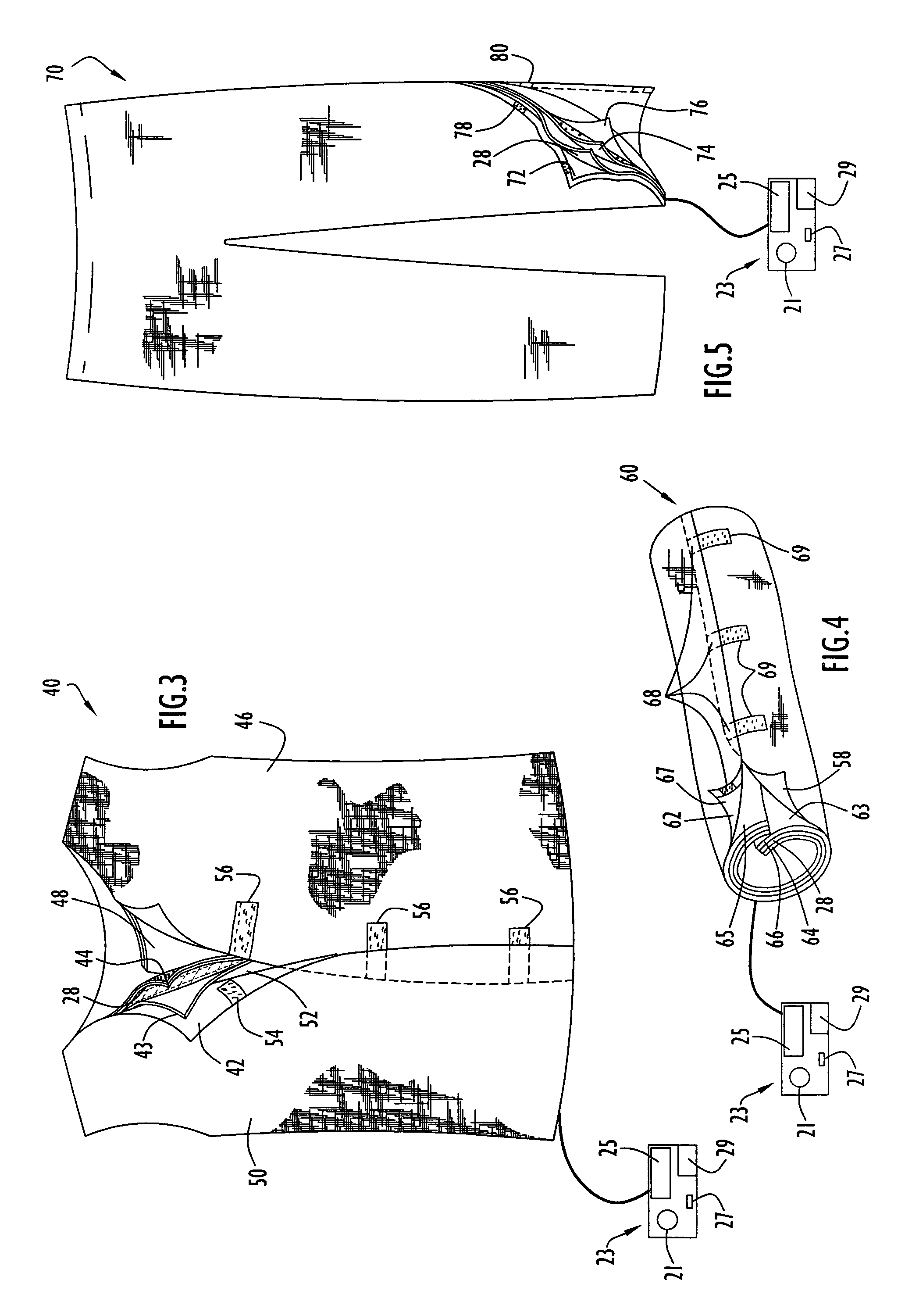Thermal treatment garment and method of thermally treating body portions
a technology of body parts and treatment garments, which is applied in the direction of protective garments, medical science, non-surgical orthopedic devices, etc., can solve the problems of cumbersome operation, limited ability of flat sheets to cover highly contoured skin surfaces of the body, and virtually impossible rapid application of dressings, etc., to achieve easy modification and minimal movement of the body
- Summary
- Abstract
- Description
- Claims
- Application Information
AI Technical Summary
Benefits of technology
Problems solved by technology
Method used
Image
Examples
Embodiment Construction
[0039]A thermal treatment garment in accordance with an exemplary embodiment of the present invention for thermally treating skin or wounds (e.g., burns, scars, etc.) is illustrated in FIG. 1. The garment includes a thermal element to heat or cool the garment to a desired temperature as described below. The garment may be utilized for treatment of wounds, such as burns or scars, or may be employed to heat or cool user body portions (e.g., warm users in cold weather or environments and / or during skiing or other cold weather activities, cool users in hot weather or environments or during activities leading to perspiration, etc.). Specifically, the exemplary garment takes the form of a sleeveless vest 10 that is shaped and sized to envelop the torso of the human body. As used herein, the term “envelop” means to substantially cover by enclosing, encasing, surrounding or fitting over a portion of the body, such that the correspondence between the shape of the garment and the covered port...
PUM
| Property | Measurement | Unit |
|---|---|---|
| Temperature | aaaaa | aaaaa |
| Structure | aaaaa | aaaaa |
| Size | aaaaa | aaaaa |
Abstract
Description
Claims
Application Information
 Login to View More
Login to View More - R&D
- Intellectual Property
- Life Sciences
- Materials
- Tech Scout
- Unparalleled Data Quality
- Higher Quality Content
- 60% Fewer Hallucinations
Browse by: Latest US Patents, China's latest patents, Technical Efficacy Thesaurus, Application Domain, Technology Topic, Popular Technical Reports.
© 2025 PatSnap. All rights reserved.Legal|Privacy policy|Modern Slavery Act Transparency Statement|Sitemap|About US| Contact US: help@patsnap.com



